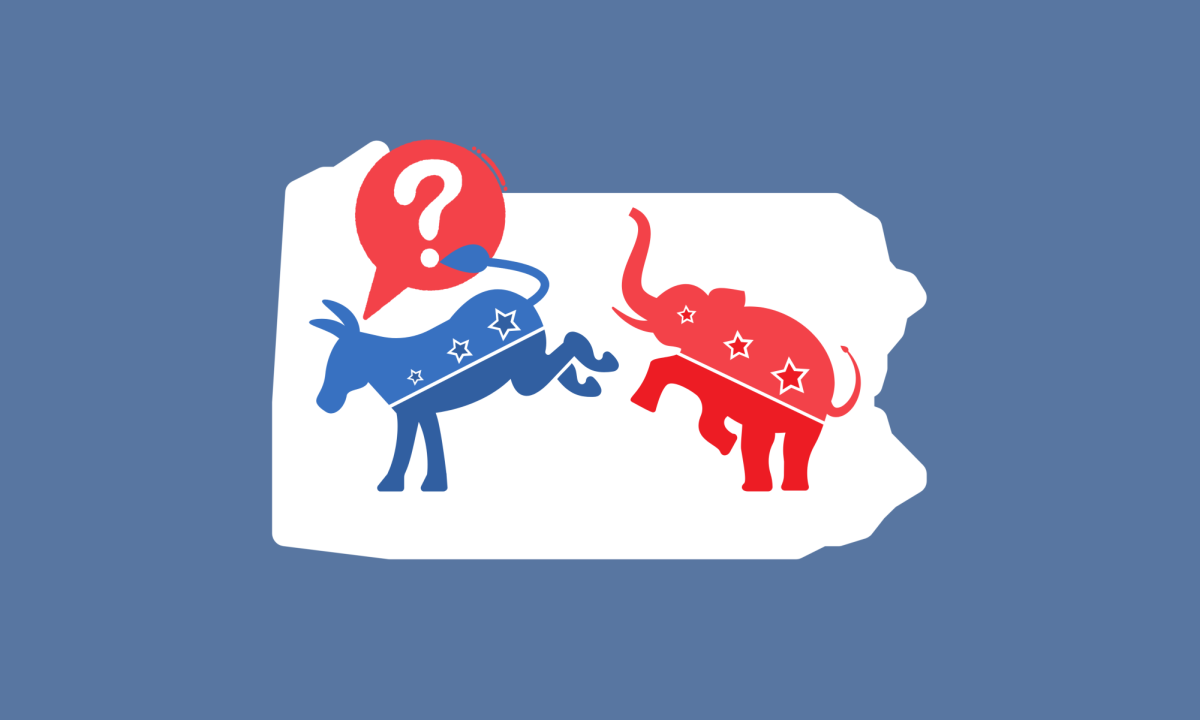
GRAPHIC: CARA HALLIGAN ’25/THE HAWK
To say the Democratic Party is in a panic right now would be an understatement. It’s been five months since the re-election of President Donald Trump and three months since his inauguration. Many Democratic politicians and voters alike are understandably frustrated at their lackluster electoral performance and by their party’s fractured sense of unity.
Democrats’ national approval ratings are low, with many voters feeling disillusioned by the party’s weak response and unnecessary centrist shift. However, discontent over President Trump’s somewhat draconian executive orders and initiatives in the past few months have similarly stirred up discontent among voters, particularly in Pennsylvania, the prominent swing state that helped secure his victory back to the White House.
Although still undeniably in contention, indicators within the state have tentatively provided hopes for Democrats to recapture the state’s public support for the foreseeable future and transform their confidence into a possible electoral victory.
Two local Pennsylvania elections have sparked attention across the state, and even regionally, for their surprising results. The first, and debatably more predictable, of the two elections was the special election in Pennsylvania House of Representatives District 35. Democrat state Representative-elect Dan Goughnour firmly won the election in the district, where Democrats outnumber Republicans in voter registration 2-to-1, preserving their razor-tight one-seat majority in the Pennsylvania House of Representatives that they’ve held onto since the 2022 midterms. The other, and arguably more interesting of the two elections, was the surprising victory of Democrat state Senator-elect James Malone in the deeply Republican-dominated Pennsylvania Senate District 36 located above Lancaster. Although he won by a slim margin, many seem to attribute his victory as a possible backlash to the controversial policies of Trump and Elon Musk, even among Republicans and former Trump voters.
While these elections are fascinating and heartening in a time of great political uncertainty, it doesn’t negate that Democratic leaders still must work to better understand and represent what Americans truly want. From my perspective, and that of many others, the party seems desperate to attract younger voters, but hasn’t taken the necessary and meaningful steps to do so.